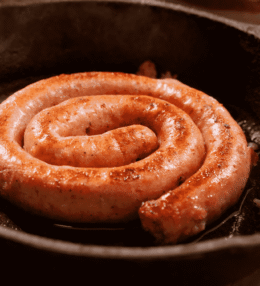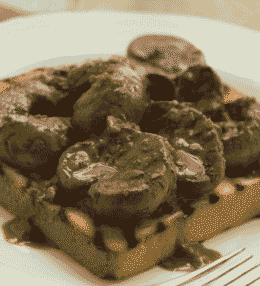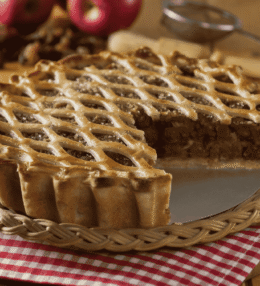
- View
Table of Contents
ToggleJellied eels are one of London’s most distinctive traditional foods, long associated with the East End. The dish is made by boiling eels until tender, then letting the cooking liquor cool into a natural jelly. It is served cold, often with vinegar, and has been a staple of working-class dining.
What makes jellied eels unusual is their texture and presentation. Instead of rich sauces or heavy seasonings, the emphasis is on simplicity. The jelly forms naturally from the collagen in the eel, leaving a dish that feels light yet satisfying.
Eaten with a fork straight from a small bowl, or paired with crusty bread or mashed potatoes, jellied eels are far from a forgotten curiosity. For many, they remain an expression of London’s food heritage, tied to community and memory.
What Is Jellied Eels?
Jellied eels are freshwater eels that have been cleaned, chopped into pieces, and simmered in salted water. As the mixture cools, the natural gelatin from the eel sets into a translucent jelly, encasing the fish.
The dish is served cold, usually in small portions. Some prefer theirs plain, while others add vinegar or white pepper for extra flavour. The jelly keeps the eel moist, turning what could be a heavy meal into something refreshing.
Part of the appeal lies in its unpolished honesty. There is no garnish or elaborate presentation. It is straightforward food that reflects the ingenuity of those who created it, using what was available along the rivers and canals.
Ingredients and Taste
The core ingredient is eel, once abundant in the Thames and surrounding waterways. Fresh eel is cut into sections, then simmered with water, salt, and sometimes a touch of parsley or lemon to bring brightness to the broth.
As the liquid cools, it becomes a clear or slightly cloudy jelly. The eel flesh itself is soft, with a delicate sweetness that surprises those expecting something overly strong. Its flavour sits somewhere between white fish and chicken.
The jelly adds a subtle savoury note, while vinegar gives sharpness to cut through the richness. Combined, it delivers a taste that is clean, slightly salty, and gently fragrant, making it far more approachable than its reputation suggests.
A Taste of History
Jellied eels emerged in London during the eighteenth century, when the Thames was still teeming with eel. They were affordable, plentiful, and easily prepared, making them a practical choice for feeding working families.
By the nineteenth century, the dish was firmly linked with pie and mash shops across the East End. These shops offered cheap, filling meals for dock workers and labourers, and eels became an everyday part of the menu.
The appeal was not only cost but also convenience. Eels required little seasoning, and the jelly acted as natural preservation before refrigeration was common. This made them an ideal food for large, busy households.
Although eel populations have declined and the dish is no longer everyday fare, jellied eels remain a symbol of East End identity. They represent resilience, resourcefulness, and a flavour that endures across generations.
Today, you can still find them in a handful of traditional shops and markets. For some, they are a nostalgic reminder of family meals. For others, they are a culinary curiosity worth trying. Either way, jellied eels hold their place in British food culture.
How to Make Jellied Eels (Cold Eel in Jelly)
Jellied eels are a classic East End delicacy, once a staple of London’s working-class diet. The dish highlights the natural gelatine released from fresh eels, creating a cool, savoury jelly. Expect tender pieces of eel suspended in a light, briny broth that sets into a traditional cold dish. See the recipe card at the bottom for printable directions
Ingredients
For the eels
- 1.5 kg fresh eels, cleaned and cut into 5 cm pieces
- 1.5 litres cold water
- 2 bay leaves
- 1 small onion, peeled and halved
- 1 tsp black peppercorns
- 1 tsp salt
For finishing
- 2 tbsp malt vinegar
- White pepper to taste
- Fresh parsley (optional, for garnish)
Cooking Instructions
Step 1: Clean and prepare the eels
To begin, rinse the eel pieces thoroughly under cold water to remove any residue. Pat dry with a clean cloth. Set aside while preparing the stock base.
Step 2: Prepare the cooking liquor
Place water, onion, bay leaves, salt, and peppercorns into a large pan. Bring to a gentle simmer over medium heat to infuse flavours. Transition to adding the eel.
Step 3: Add the eel
Lower the eel pieces into the simmering liquor. Cook gently for 20–25 minutes until the eel turns opaque and tender. Avoid vigorous boiling, which can toughen the flesh. Move to straining the stock.
Step 4: Strain the liquor
Remove the eel pieces with a slotted spoon and set aside. Strain the cooking liquor through a fine sieve to remove onion, peppercorns, and bay leaves. Keep the liquid for setting the jelly.
Step 5: Reduce the stock
Return the strained liquor to the pan. Simmer uncovered for 10–15 minutes until slightly reduced. This intensifies the flavour and allows natural gelatine from the eel to concentrate. Move to combining.
Step 6: Combine eel and stock
Place cooked eel pieces into a shallow dish or mould. Pour over the hot reduced liquor until the eel is just covered. Transition to cooling.
Step 7: Cool the mixture
Allow the dish to cool at room temperature before transferring to the refrigerator. Chill for at least 4 hours or until the stock has fully set into a firm jelly. Move to final seasoning.
Step 8: Season and garnish
Before serving, drizzle with malt vinegar and sprinkle with white pepper. Add parsley for a fresh touch if desired. Transition to presentation.
Final Step: Serve cold
Serve Jellied Eels cold, straight from the fridge. Traditionally enjoyed with bread and a splash of vinegar. Presentation tip: serve in small bowls with extra vinegar on the side for authenticity.
Variations and Substitutions
- If fresh eel is unavailable, substitute with firm white fish such as monkfish or pike, though the natural jelly will be less pronounced.
- Commercial gelatine may be added if the stock does not set firmly.
- Replace malt vinegar with cider vinegar if preferred.
Cooking Tips for Perfect Jellied Eels
- Always simmer gently to avoid breaking the delicate eel flesh.
- Use very fresh eel, as the flavour relies on its natural sweetness.
- Allow sufficient chilling time for a firm jelly.
- Serve with traditional malt vinegar to balance the richness.

Jellied Eels (Cold Eel in Jelly)
Ingredients
For the eels
- 1.5 kg fresh eels cleaned and cut into 5 cm pieces
- 1.5 litres cold water
- 2 bay leaves
- 1 small onion peeled and halved
- 1 tsp black peppercorns
- 1 tsp salt
For finishing
- 2 tbsp malt vinegar
- White pepper to taste
- Fresh parsley optional, for garnish
Instructions
- To begin, rinse the eel pieces thoroughly under cold water to remove any residue. Pat dry with a clean cloth. Set aside while preparing the stock base.
- Place water, onion, bay leaves, salt, and peppercorns into a large pan. Bring to a gentle simmer over medium heat to infuse flavours. Transition to adding the eel.
- Lower the eel pieces into the simmering liquor. Cook gently for 20–25 minutes until the eel turns opaque and tender. Avoid vigorous boiling, which can toughen the flesh. Move to straining the stock.
- Remove the eel pieces with a slotted spoon and set aside. Strain the cooking liquor through a fine sieve to remove onion, peppercorns, and bay leaves. Keep the liquid for setting the jelly.
- Return the strained liquor to the pan. Simmer uncovered for 10–15 minutes until slightly reduced. This intensifies the flavour and allows natural gelatine from the eel to concentrate. Move to combining.
- Place cooked eel pieces into a shallow dish or mould. Pour over the hot reduced liquor until the eel is just covered. Transition to cooling.
- Allow the dish to cool at room temperature before transferring to the refrigerator. Chill for at least 4 hours or until the stock has fully set into a firm jelly. Move to final seasoning.
- Before serving, drizzle with malt vinegar and sprinkle with white pepper. Add parsley for a fresh touch if desired. Transition to presentation.
- Serve Jellied Eels cold, straight from the fridge. Traditionally enjoyed with bread and a splash of vinegar. Presentation tip: serve in small bowls with extra vinegar on the side for authenticity.







Leave a Review